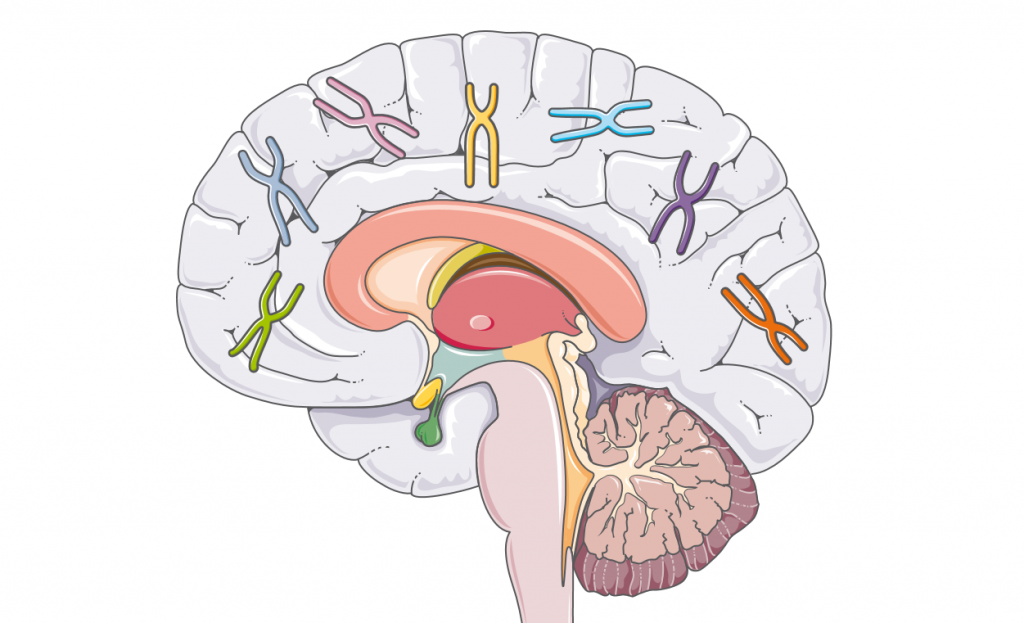This post is also available in Dutch.
In many brain disorders such as autism spectrum disorder, Parkinson’s disease and schizophrenia, genes can contribute to the development of the disorder as we explained in this previous blog. Scientists have been working on unraveling these genes for years now, hoping that one day this will lead to a breakthrough in understanding what causes these disorders, thereby advancing treatments. However, after years of research identifying many more genes that play a role in various diseases, we have yet to see better treatments in many cases. But why exactly is that?
Identifying disadvantageous gene variants
One of the main reasons for the little progress made is that many brain disorders involve a lot of different genes (read our previous blog for an example of a ‘complex’ genetic case). Genes can have multiple variants and each variant can either slightly increase or decrease our risk of getting a certain brain disorder.

To make things even more complicated, in most cases, these gene variants that add to our risk of developing a certain disorder are surprisingly common; they also occur in healthy people. As each gene variant only leads to the disorder in combination with many other disadvantageous gene variants, as well as environmental influences, it can be very hard to identify the variants that actually contribute to a disorder.
Unravelling the role of a gene variant
But even after having identified a gene variant that is disadvantageous, some problems remain. For example, some of these variants exist on bits of DNA of which we don’t yet know the function, or it is not clear how the variant changes the function of the gene. Moreover, with so many different genes that are causally involved in a brain disorder, it is really hard to interpret the findings and to see how all of them contribute to the same outcome.
Is there hope for the future?
You’re now probably wondering if, because of all these difficulties, there’s even a point in unravelling the risk genes for disorders. Yes, there is! The key is to find some common ground between all the different risk genes. The gene variants implicated in a certain brain disorder often are not as unrelated as they seem at first sight. Many of these genes actually work together and form a network (also known as signaling pathways) that as a whole performs a certain task. That is also why many of these minor changes in genes are required for a disorder to develop: often the function of a certain network is only disrupted if multiple components (genes) of that network are affected.
By focusing on these larger networks or pathways, and not on single genes, it is much easier to understand what goes wrong in a particular brain disorder and which processes or functions are impaired. Researchers can identify where a certain pathway is disrupted and come up with a solution to restore the function, i.e., develop new drugs for treatment. Additionally, by unravelling how proteins derived from different genes act together in a network, scientists are also able to develop more combination therapies. Drug combinations that work on multiple targets within the same network can boost treatment success. Reason enough to put a lot of effort into discovering disadvantageous gene variants, don’t you think?
Lead image adapted from LES LABORATOIRES SERVIER (CC BY 3.0).
Original language: English
Author: Eva Klimars
Buddy: Christienne Gonzales Damatac
Editor: Marisha Manahova
Translator: Wessel Hieselaar
Editor Translation: Jill Naaijen
